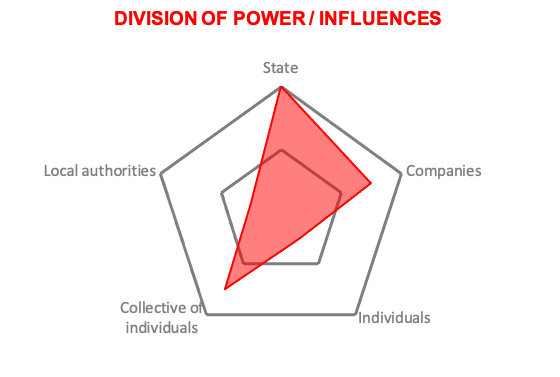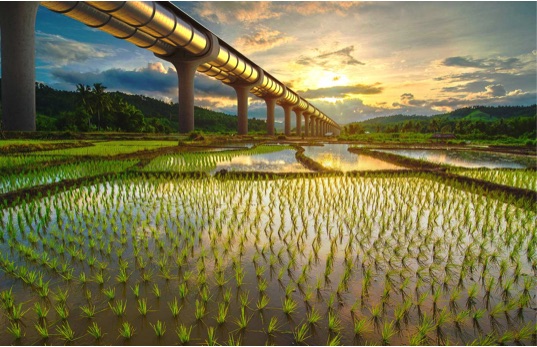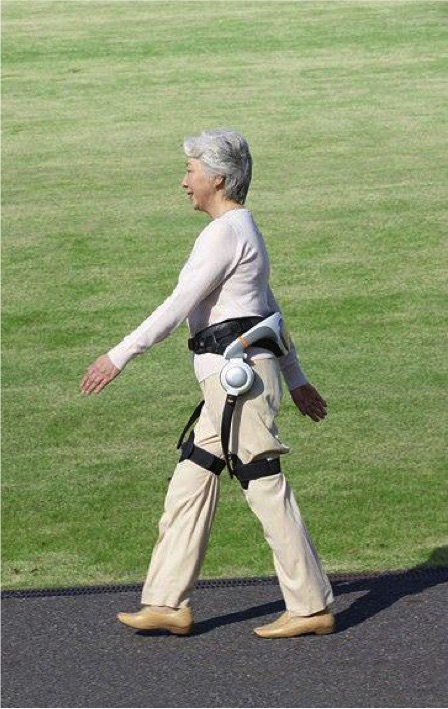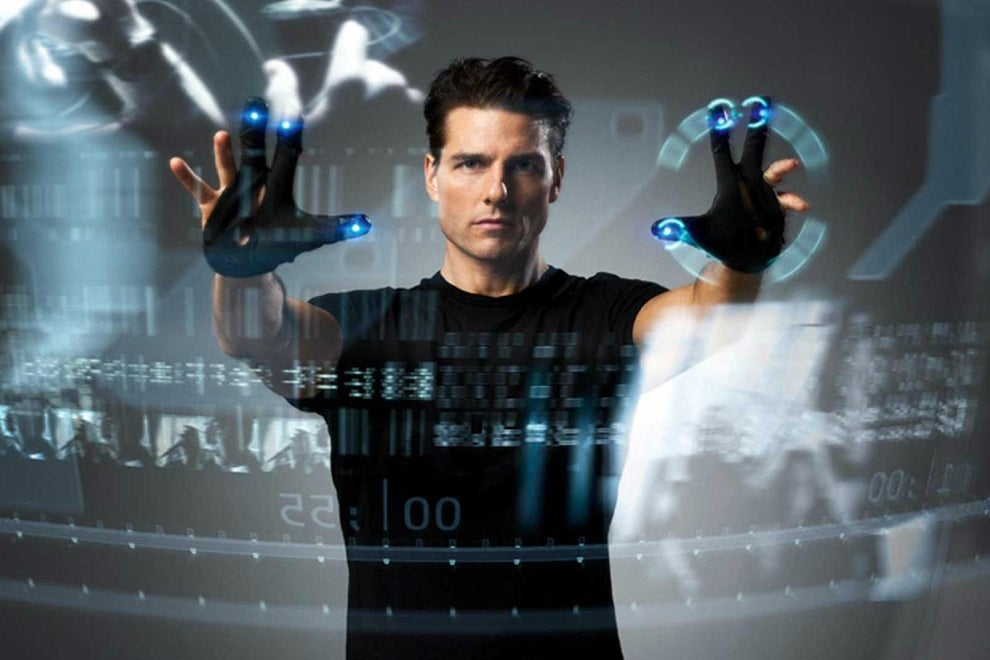- Home
- Prospective scenarios
- Scenario #2
Scenario #2
Scenario #2
Redeeming technology as guide
The world manages to control the trajectory to +2°C in 2100 thanks to disruptive tech innovations that have, in particular, enabled an energy supply that is plentiful, cheap and decarbonised. The high price of carbon established in the 2020s stepped up research to this end and has paid off. Natural resources are preserved since technology requires less resources or diversified and renewable resources. The global population reaches 10 billion individuals. Most humans live in vertical metropoles that optimise spatial occupancy and supply of resources.
For the first time in its history, humanity has succeeded in completely decoupling economic growth from exploitation of resources, while controlling rebound effects.
Technology is present everywhere in the lives of everyone, everything is digitised: cities, behaviour, movements, purchases, bodies…. Consumption of goods, services, and travel is high in a wide open world suffering few conflicts. Individual behaviour is monitored and controlled on behalf of the common good, for for all aspects of life in society: journeys, public order, behaviour, pandemics…
Inequalities persist but the poorest are protected by strong States.
Final production tailored to the individual is relocated to the quasi-individual level, calling on factories closer to consumption and micro-factories. Base materials are still produced at global level.
This boom in technology has also occurred in Africa, which has spearheaded many innovations. The population on the continent, young and educated, is the driving force of an Africa experiencing the highest growth rates in the world.
Nevertheless, natural disasters are increasingly frequent and rising water levels reach one metre, rendering certain territories uninhabitable. Some islands in Oceania have disappeared, forcing inhabitants to seek refuge elsewhere. The sixth mass extinction is underway. Farming uses cutting-edge technologies to replace services provided by mother nature (pollination…).
ILLUSTRATIONS
INDICATORS
Society

Organisation is both local (final production) and global (base materials).

The body is augmented to such an extent limits to human life are extended.

Ecosystems provide resources for humans who regulate their use.

Sharing, open source represent a powerful counter-current.

Innovation is king: disruptive innovation, with due regard to the planetary limits.

Global consumption is growing with access to technologies.
Resources

Energy is plentiful, decarbonised and consumes few metals / materials.

Primary materials and water are used sparingly and recycled. Agricultural foodstuffs are available.

Thanks to technology, growth and exploiting resources is decoupled.

The price of carbon is extremely high, and has become the vital criterion for economic decisions.

Natural disasters are commonplace but ‘green’ tech has enabled adaptation.
(Geo)politics

No sources of conflict so there are few conflicts.

Migration is stronger than in 2020, but there is also migration desired by people.

States are hugely powerful, sources of protection for the community through strict control of individuals. They delegate part of their prerogatives (surveillance, flow management) to multinationals.
The individual only participates as a consumer.
The voice of communities exists as a counter-power, especially the community of computer specialists / tech experts / researchers.
MOBILITY

Unbridled mobility
Since energy is plentiful, cheap and decarbonised, mobility is accessible to all and all the time. The many means of transport co-exist in a fully digitised world, which makes it possible to limit accidents and congestion.
Urbanisation in the previous decades was exclusively vertical, hence cities no longer encroach on the countryside. The speed of travel expands presence and exchanges. Since the countryside is easier to access, villages are reinhabited by neo-rurals, working remotely, or on the land to produce energy, materials, and food.
Laws require people to follow recommendations provided by their personal digital assistants when travelling, with all trips shared/by public transport. For passengers, switching from one transport mode to another is straightforward.
The individual car disappeared from all continents, both from cities and the countryside, over a decade ago. Flying taxis emerged in 2025-2030 and were adopted, yet personal digital assistants restrict their use in the case of emergencies, a handicap or even with dissuasive pricing – in order to control skyflow.
A handful of multinationals are leading digitisation of mobility with flow management schemes imposed on every major city worldwide.
Tourism, global, is flourishing. Far-flung trips are accessible to all because they are inexpensive. Risks of damaging special sites around the world are curbed through flow management and individual behaviour ratings leading to severe penalties. Millionaires can afford trips to the Moon Village while billionaires take off for Mars.
Materials rather than finished products travel the world over. Many of these materials are bio-sourced to meet international demand for resource renewal. These flows are managed by an oligopoly of large international firms that have integrated production and management of these resources
THE STORY
Soo-Jin is a widow. She lives in Seoul, Korea. Due to a handicap she moves with the help of an exoskeleton that has a 12-hour range (around 20km). She likes taking walks, going to her piano lessons, and visiting family and friends.
Her problem: visiting a cousin who lives in the country.
Soo-Jin’s personal voice assistant (sold by a large international firm with her smartphone) is going to help plan her trip. It’s not easy because as well managing the range of her exoskeleton, Soo-Jin has to walk several kilometes every day for medical reasons.
Alone and stressed out by this long journey, she is carrying quite a heavy suitcase filled with presents and jam.
The voice assistant knows to take into account Soo-Jin’s personal contraints as well as the timetables, in real time, of all the transport modes available to her.
Soo-Jin prepares her trip in advance, reassured by her voice assistant. The eve of departure, her suitcase is fully taken charge of in a separate logistics circuit, from a delivery point close to her home. It will arrive at destination before her, delivered by a droid.
For her part, Soo-Jin follows the instructions of her personal assistant: flying taxi to the station, high-speed train, then driverless and on-demand public transport. Her assistant gets her to alight several kilometres before destination so she can get in her daily walk, in pleasant surroundings, before reaching her relation’s home.
Her medical chip has not triggered an alert: the walk was well timed. It was a satisfying trip.

OUR COMPANIES?

Brainstorming workshop
Would my company exist in this world? What/Who would its business, mission statement, offers, partners / competitors be?
What about other mobility industry companies?
What strategy to adopt from now on to make our companies strong in this particular scenario?
Economic growth first
Preserving the planet first and foremost
